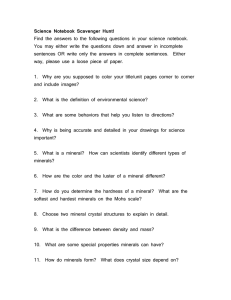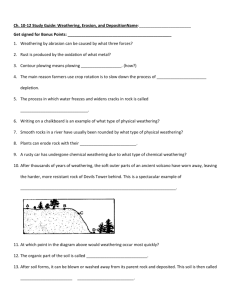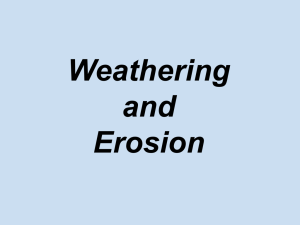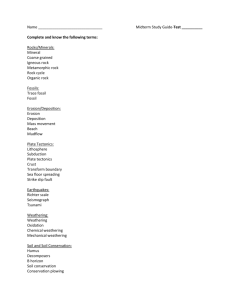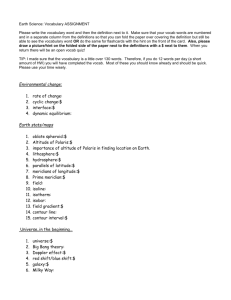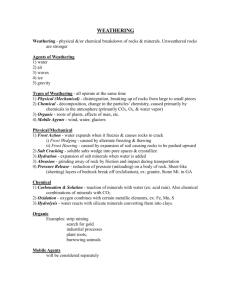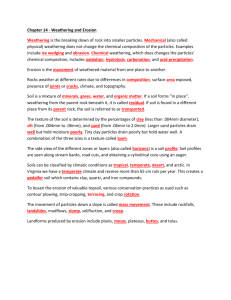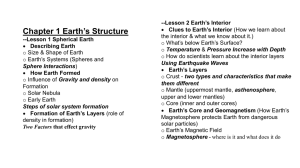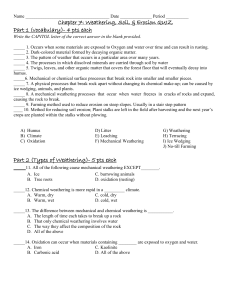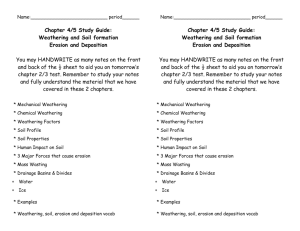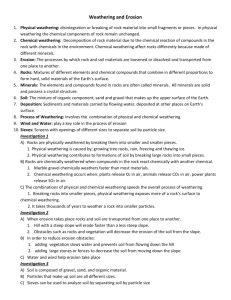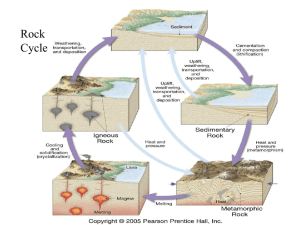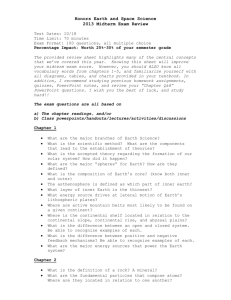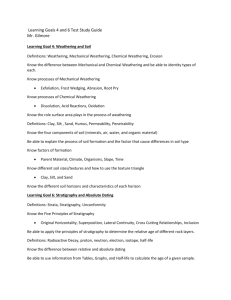1st 9 Week Exam Study Guide Name: Get signed for BONUS points
advertisement
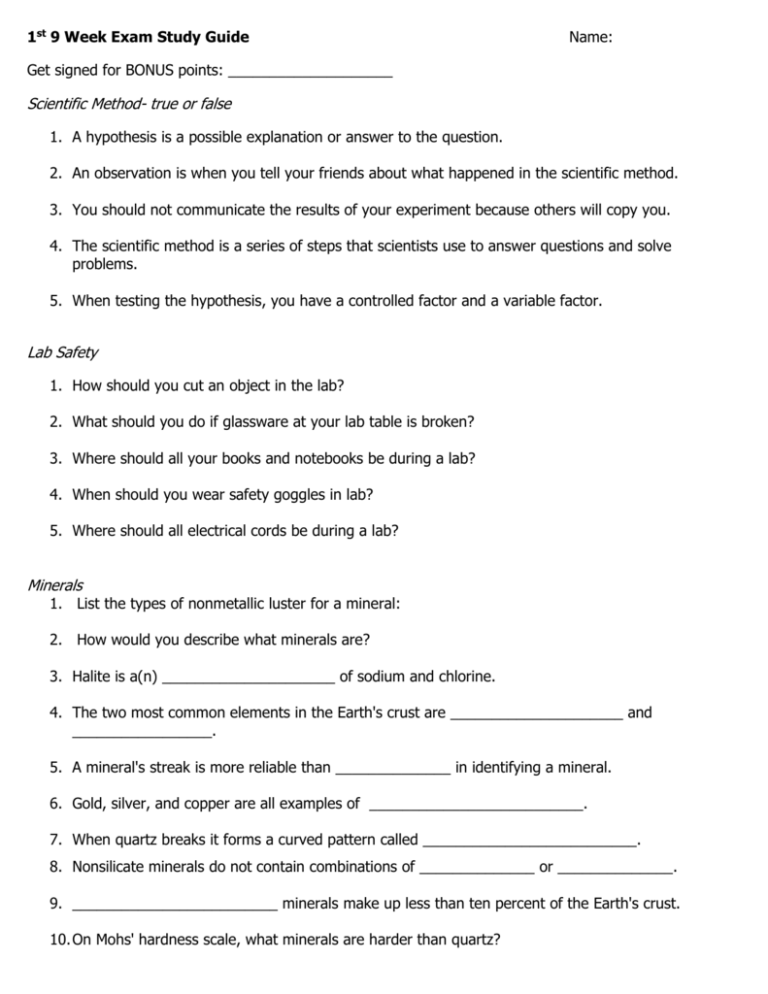
1st 9 Week Exam Study Guide Name: Get signed for BONUS points: ____________________ Scientific Method- true or false 1. A hypothesis is a possible explanation or answer to the question. 2. An observation is when you tell your friends about what happened in the scientific method. 3. You should not communicate the results of your experiment because others will copy you. 4. The scientific method is a series of steps that scientists use to answer questions and solve problems. 5. When testing the hypothesis, you have a controlled factor and a variable factor. Lab Safety 1. How should you cut an object in the lab? 2. What should you do if glassware at your lab table is broken? 3. Where should all your books and notebooks be during a lab? 4. When should you wear safety goggles in lab? 5. Where should all electrical cords be during a lab? Minerals 1. List the types of nonmetallic luster for a mineral: 2. How would you describe what minerals are? 3. Halite is a(n) _____________________ of sodium and chlorine. 4. The two most common elements in the Earth's crust are _____________________ and _________________. 5. A mineral's streak is more reliable than ______________ in identifying a mineral. 6. Gold, silver, and copper are all examples of __________________________. 7. When quartz breaks it forms a curved pattern called __________________________. 8. Nonsilicate minerals do not contain combinations of ______________ or ______________. 9. _________________________ minerals make up less than ten percent of the Earth's crust. 10. On Mohs' hardness scale, what minerals are harder than quartz? Weathering, Erosion, and Deposition 1. Rust is produced by the oxidation of what metal? 2. The process in which water freezes and widens cracks in a rock is called _______________________________. 3. Smooth rocks in a river have usually been rounded by what type of physical weathering? 4. A rusty car has undergone what type of chemical weathering? 5. After thousands of years of weathering, the soft outer parts of an ancient volcano have worn away, leaving the harder, more weather resistant rock of Devil’s Tower behind. This is a spectacular example of _______________________________ weathering. 6. The organic part of soil is called ____________________________. 7. Weathering by abrasion can be caused by what three forces? 8. After soil forms, it can be blown or washed away from its parent rock and deposited. This soil is then called ________________________ soil. 9. Describe what can be found in the B Horizon of a soil profile. 10. What benefits does healthy soil provide? 11. What is a type of slow mass movement? 12. The lifting and removal of sediment by wind is called _____________________________. 13. List the different processes of wind erosion. 14. What erosion process tends to leave behind features called desert pavement? 15. What landforms created by glacial erosion are also called glacial troughs? 16. All slopes undergo a very slow mass movement called _____________________. 17. This is the skipping and bouncing of sand-sized particles in the direction the wind is blowing. 18. This type of moraine forms when rock materials are dropped at the front of a glacier. 19. A group of loose rocks that fall or roll down a steep slope is called a ________________________. 20. The rapid movement of a large mass of mud is called a _________________________.

